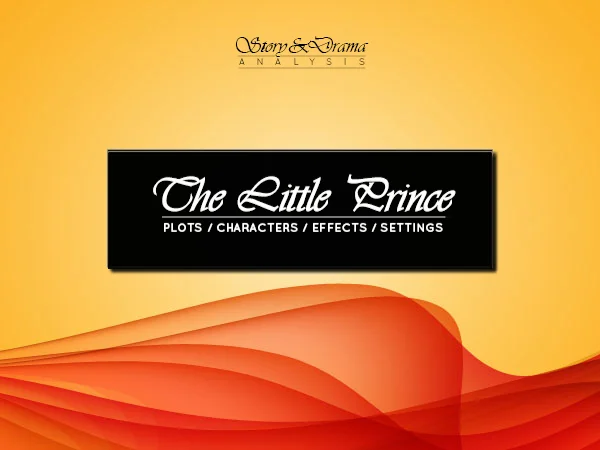 |
|
PDF, 75 pages
|
Here is our analysis of The Little Prince, the story for children that makes everybody cry. 175 million copies were sold around the world.
The Little Prince – Story analysis – Chapter IX – The prince leaves his asteroid
“I believe that for his escape he took advantage of the migration of a flock of wild birds.”
Theme: still in the same logics, the narrator sets right away the theme of this new plot.
Information distribution: the narrator reverts to omniscient mode, which means that he knows the details of the story of everyone else, without this story having been told.
Before leaving, the little prince cleans out his active volcanos – he has two, plus a third one which stays inactive. Follows a little digression about the impossibility of cleaning out volcanos on earth, because they are too big or we are too small.
Structure: exposition (the little prince on his planet) and catalyst (he wants to leave) then beginning of the development of Act II of the escape plot.
Pattern repetition: the game that consists in opposing small and big things, the little prince’s tiny asteroid and of our huge planet, continues. It might ease the young readership, comforted by the existence of a world made for their size, not at the grown-ups’.
The little prince comes to greet his flower goodbye, before sheltering her under a glass bell.
Ideology: sorry to insist, but the author started it: this glass bell enclosing the only feminine character sounds malicious, because it is actually a glass prison, a guardianship under a pretext of protection claimed by the Rose herself. Could we imagine putting the little prince under a glass bell, him who embodies freedom and mobility (“…for his escape he took advantage of the migration of a flock of wild birds”), exactly like the airman? Little girl = don’t you move, stay quiet, stay locked home; little boy = be free, conquer the world, it’s yours! Tss…
At first the rose refuses to speak, then she declares her love to the little prince. She accuses herself of having been silly, wishes him to be happy, refuses to be set under the glass bell, pretending she can defend herself with her “claws” (her thorns), then she dismisses him dryly, actually out of decency, so that he does not see her cry… The text concludes: “She was such a proud flower…”
And here are the 11th and 12th misogynistic properties: sillyness, then pride… Those defects being partly redeemed by modesty?
Structure: as in several previous mini-plots, the crisis takes place very early. We can rebuild the dramatic data: Hero, the prince who wants to leave, antagonism, his sadness for having to leave his flower, and Helper of the Hero, the flower herself who encourages the little prince to abandon her.
…
Read our full analysis of The Little Prince, by Antoine de Saint-Exupery and improve your writing skills